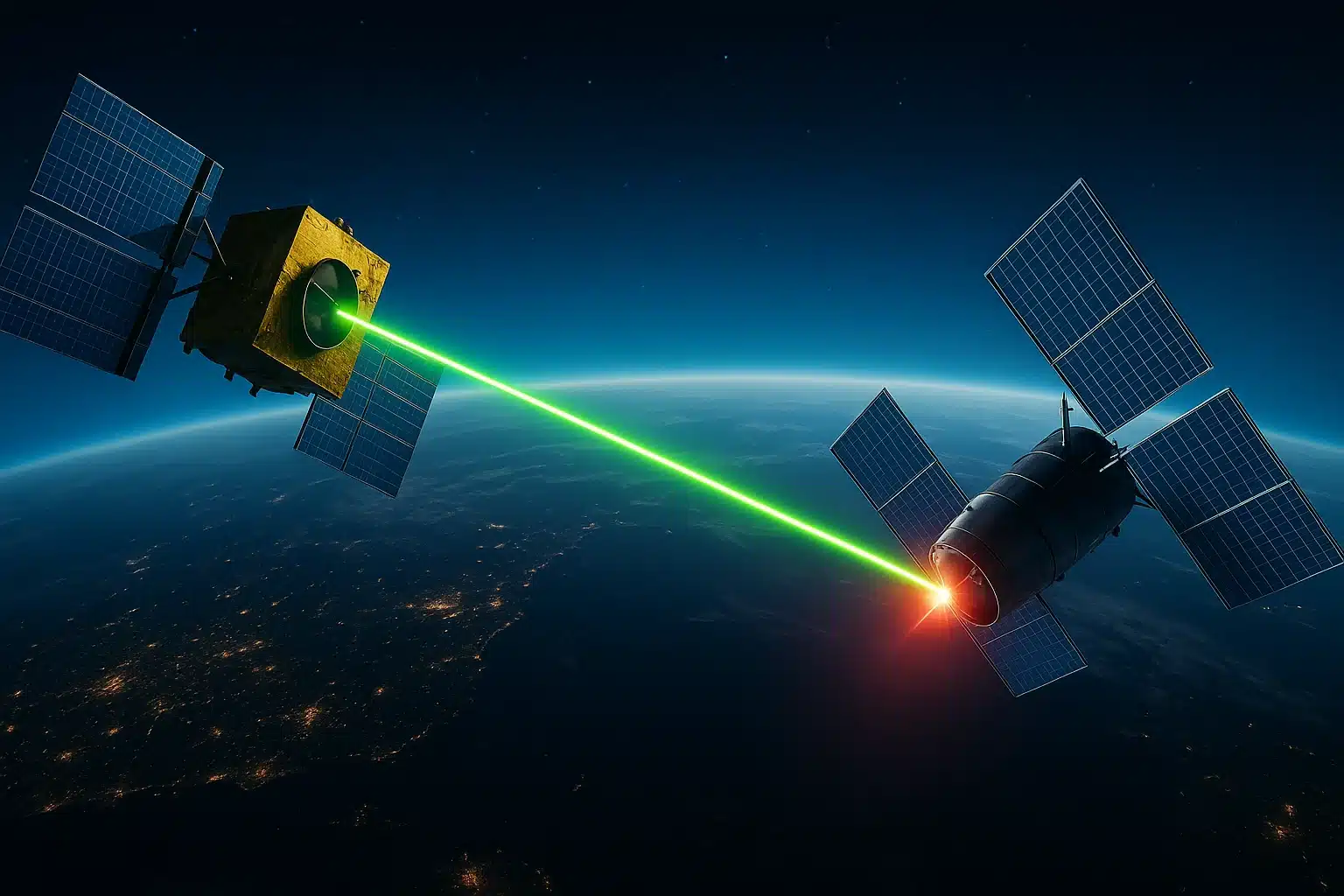Chinese satellite Starlink news has taken over headlines. If you’re confused about what’s real and what’s just hype, you’re not alone. With space tech becoming a big part of world politics, the idea of a Chinese satellite using a laser on Elon Musk’s Starlink system sounds serious. Here’s a simple explanation of what happened, why it matters, and what it could mean for the future of space and internet.
What Happened?
On June 18, 2025, news sites like Daily Galaxy and SCMP said that a Chinese satellite used a 2-watt laser from space, about 36,000 km above Earth. The laser was aimed at a Starlink satellite, part of Elon Musk’s space internet system.
The Chinese satellite was part of a test. It may have interrupted Starlink signals for a short time using its laser. This has caused a lot of concern among space experts, defense teams, and tech watchers around the world.
Tech Comparison: China vs Starlink
Starlink uses low-orbit satellites that give internet speeds between 50 and 250 Mbps. The Chinese satellite used laser communication, which can send data five times faster.
But what does a 2-watt laser do in space? While it might sound weak, in space it can be strong enough to mess with other satellites if aimed well. This shows China is making big progress in laser and space communication tech.
This could be the start of a new race between countries for better space tech.
What Does This Mean Politically?
Experts think this wasn’t just a random test. It might have been a message to the U.S. and to companies like SpaceX. Dr. Mei Chen, a space expert, said:
“China is showing that it has power in space. They aren’t trying to start a war, but they are warning others not to take them lightly.”
This shows the world that China is serious about space. Since Starlink can be used by the military and for normal internet, this test is a big deal. It raises fears about turning space into a battleground.
🛰️ Build Your Career in Space, Cybersecurity & Defense
Fascinated by satellite tech, laser communications, or the future of space security?
Explore top opportunities in Aerospace, Cybersecurity, Defense Technology, and AI-powered systems — sectors shaping tomorrow’s global infrastructure.
WhatJobs connects you with cutting-edge roles that matter — from satellite operations to orbital threat detection and space innovation.
👉 Browse space & defense jobs now — and launch your future in tech that protects the world.Is Starlink in Danger?
Could lasers stop Starlink?
SpaceX hasn’t commented yet, but Starlink satellites are built to be strong. They can move around in space, use backup systems, and change how they send signals.
Still, lasers could confuse or delay some of them. Governments are now thinking about how safe private satellites really are.
So yes, Starlink is strong—but not impossible to attack.
Are the News Stories Exaggerating?
Yes and no.
Some headlines say a Chinese satellite “destroyed” a Starlink one. That’s not true. There was no real damage. It was most likely a test that showed how a laser could cause trouble.
So, while the story is real, it’s not as scary as some websites make it sound. It’s important to look at the facts and rely on trusted resources like CISA for updates on satellite security.
What Happens Next?
We may now be seeing the start of a new kind of space competition.
Here are the big questions:
- Will there be global rules about using lasers in space?
- Are SpaceX, Amazon (Kuiper), and OneWeb ready for these risks?
- Can countries keep internet services safe during future conflicts?
Experts think that future satellites will need smarter systems, shields against lasers, and ways to stop attacks in real-time.
FAQs
Did China destroy a Starlink satellite?
No. There was no destruction. It was just a laser test that may have caused brief signal issues.
Why use a 2-watt laser in space?
It helps send data using light or may be used to test how well other systems react. It’s more of a test than an attack.
Is Starlink safe?
Mostly yes. But like anything in space, it can face interference. It has safety tools to deal with some of these risks.
Is this the start of a space war?
Not yet, but it does show that countries are preparing space tools that can be used in future conflicts.




